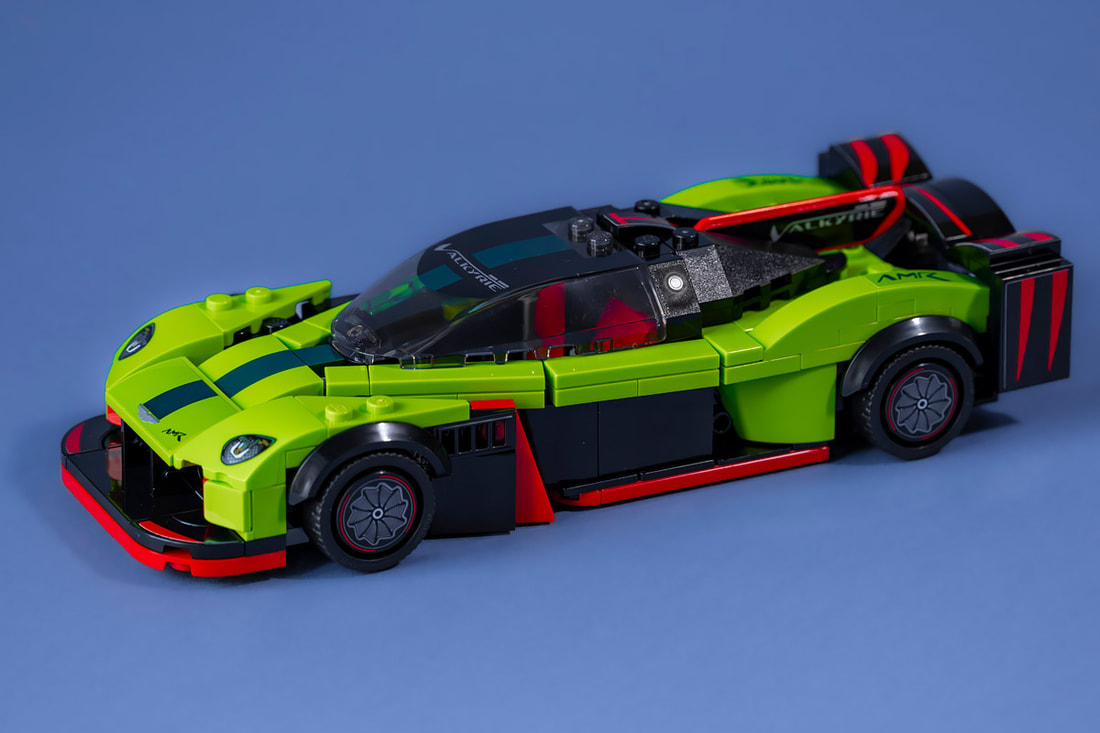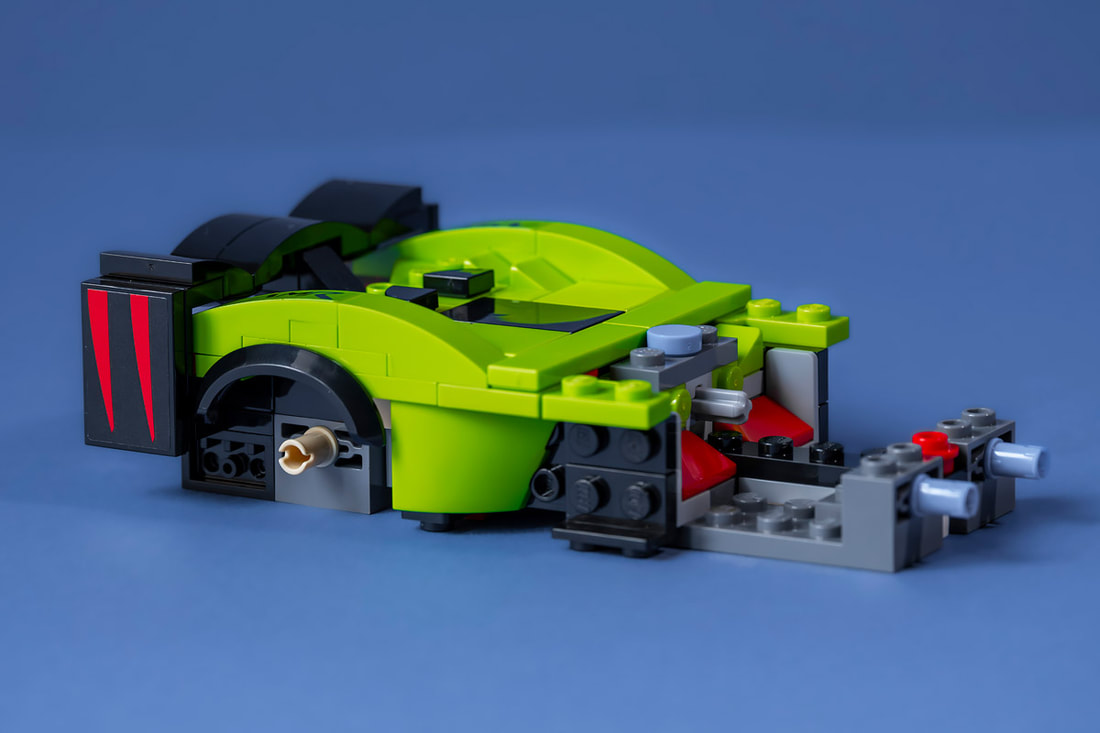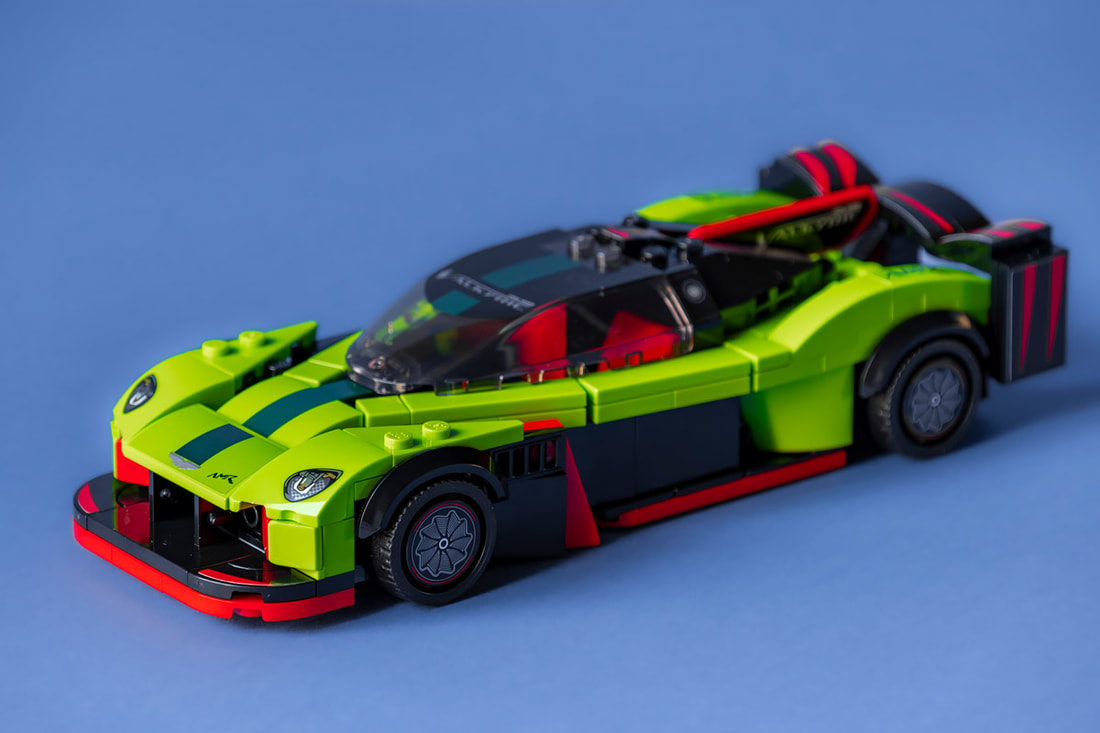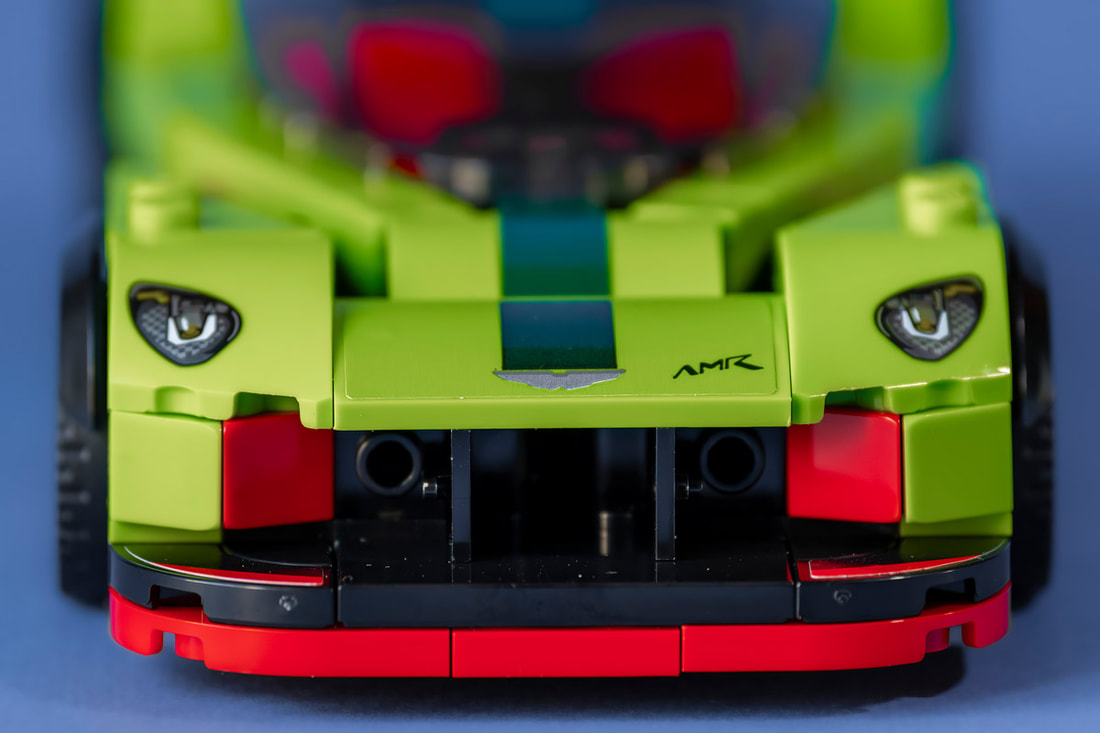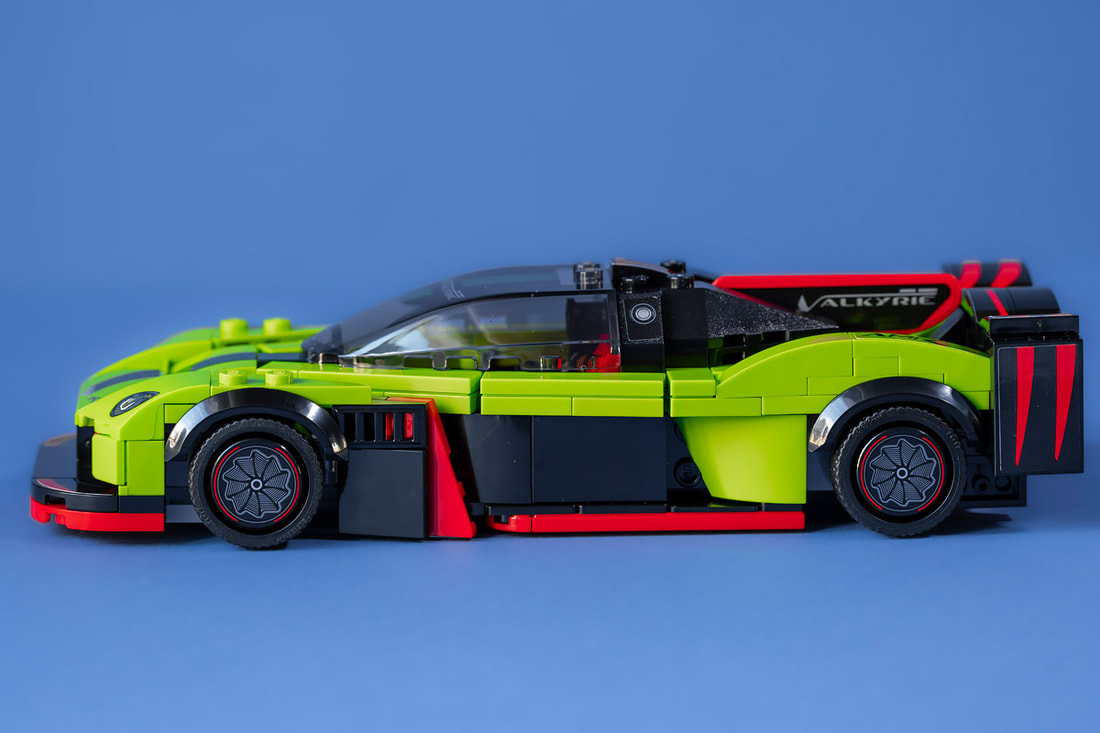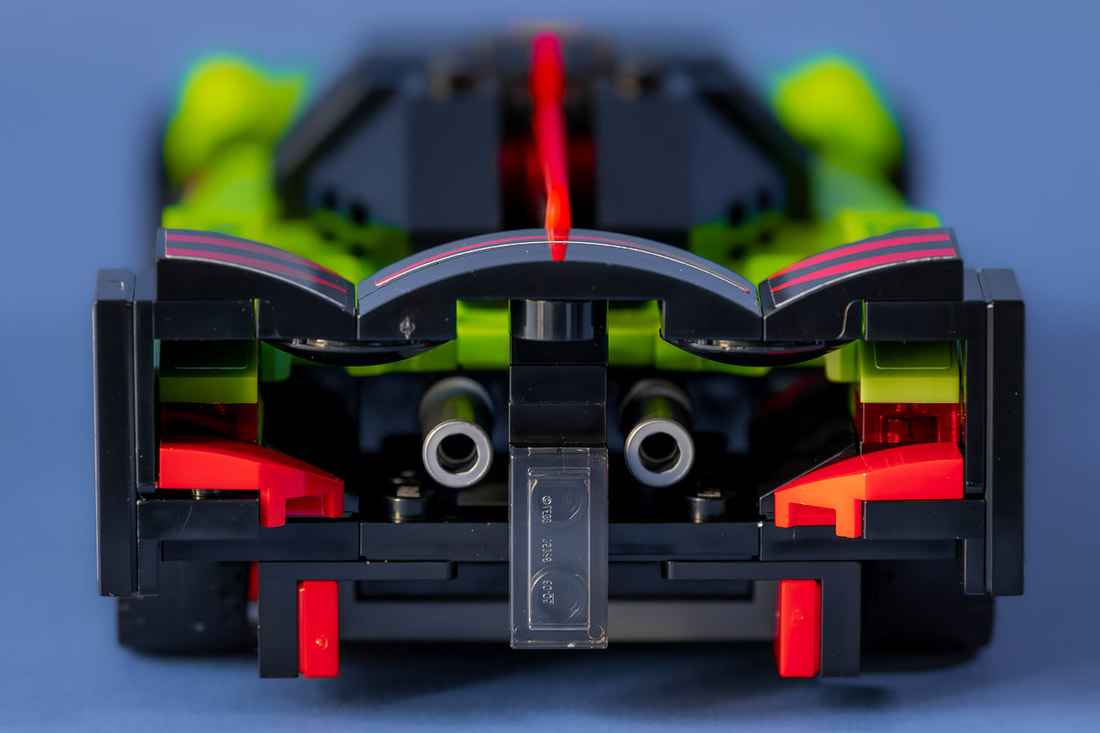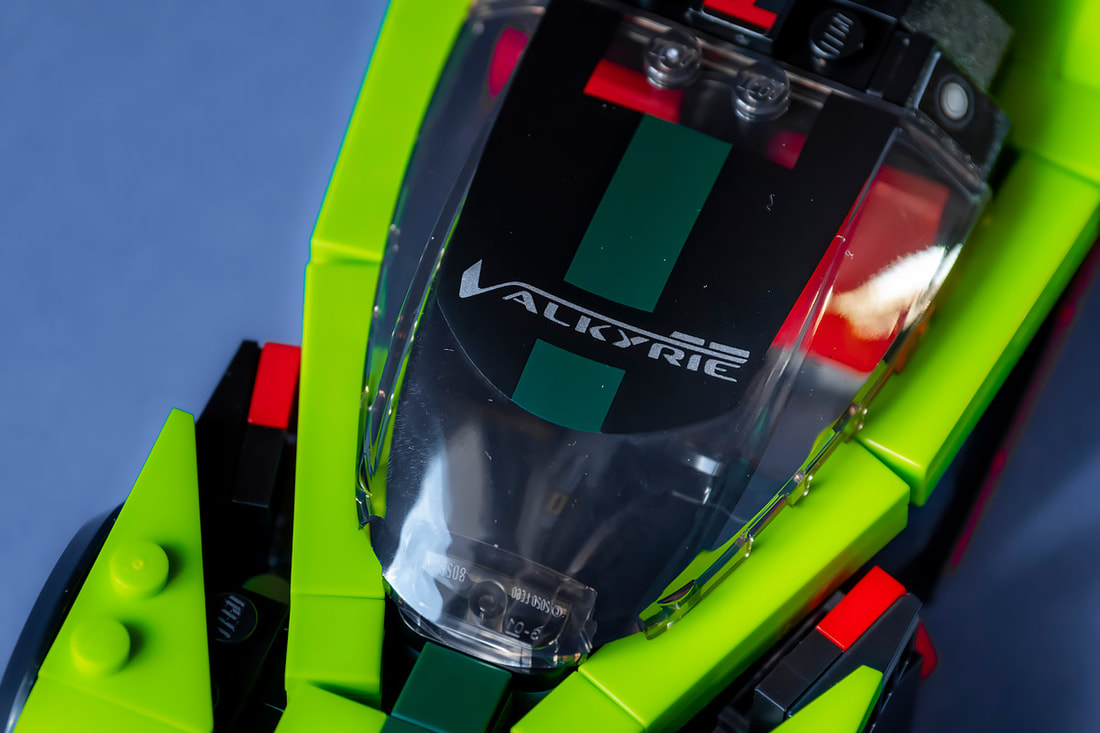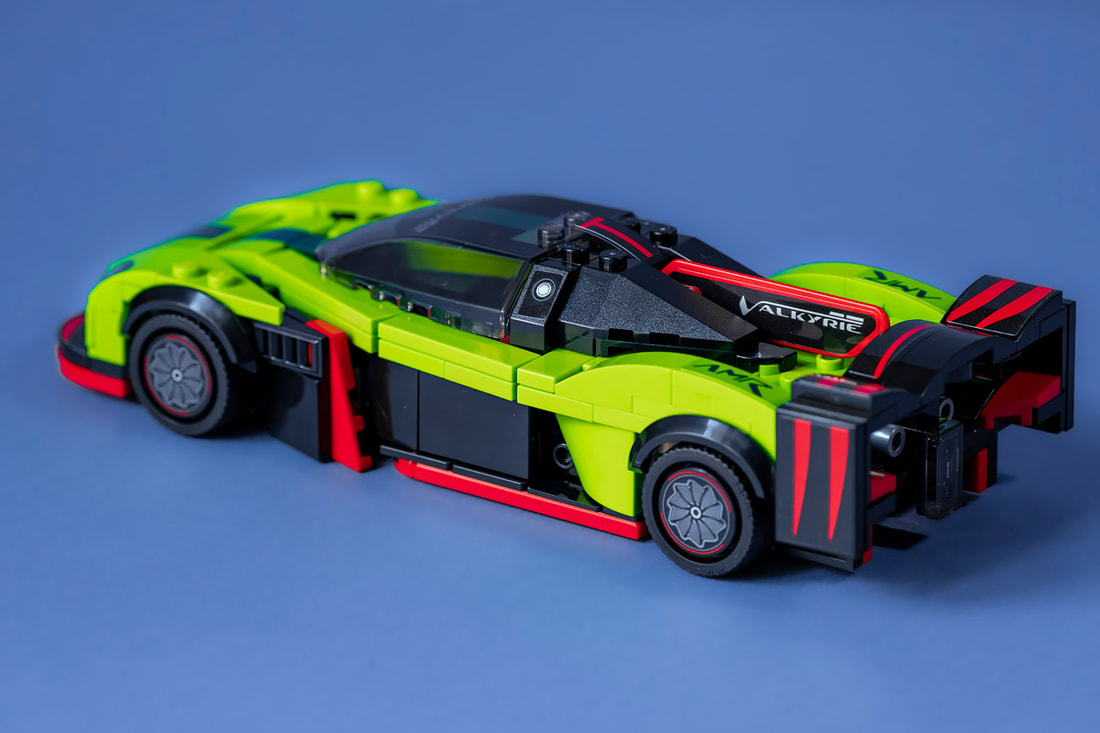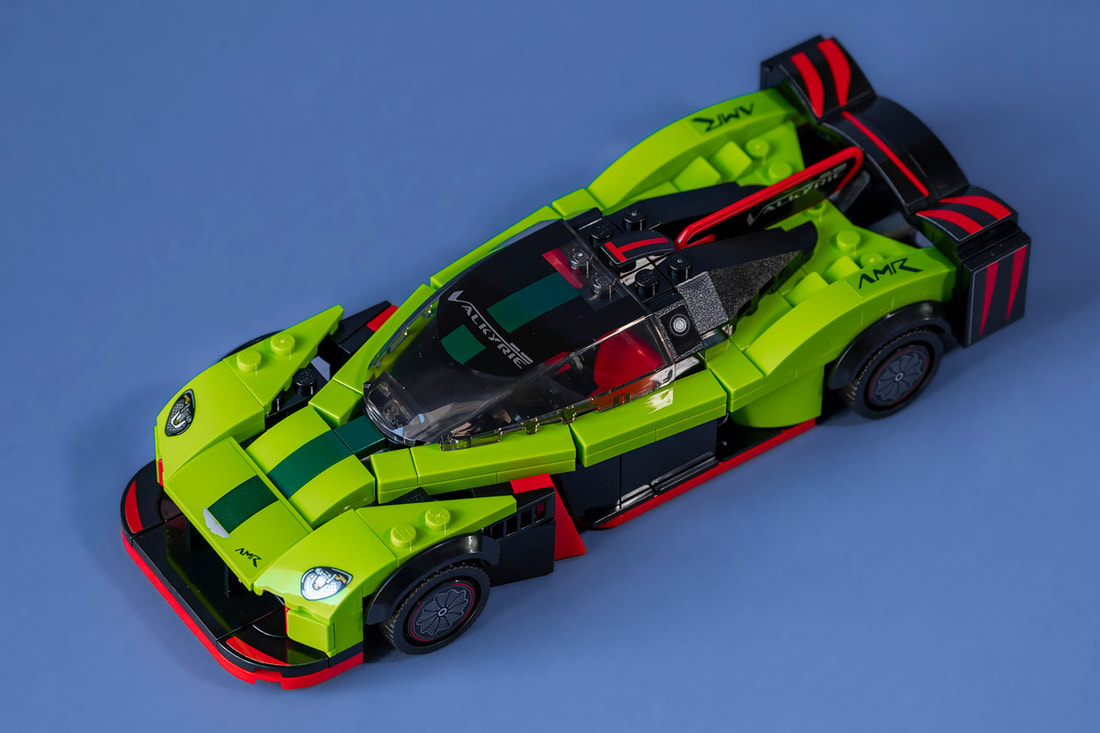By Antonio MalaraThe Lego version of the Aston Martin Valkyrie AMR Pro immediately impressed me despite being sold in a bundle with the Aston Martin Vantage GT3. What I immediately noticed about the Valkyrie was the design of the sides which, compared to other sports cars, had a shape very similar to those of Formula 1 cars. A shape in which the lateral parts, at the height of the passenger compartment, converged towards the hood leaving an aerodynamic gap between it and the wheel part. To tell the truth, I didn't study the other details further but this one was enough to make me buy the set. Subsequently, before starting to assemble the Lego, I read the characteristics of the car and above all I watched some videos. The Valkyrie AMR Pro is the even sportier version of the "normal" version which is a car equipped with a 6.5-liter V12 naturally aspirated engine that develops 1,000 horsepower combined with an electric motor with KERS system which effectively makes the car hybrid. From what I've seen, the electric motor is only used to move the car during slow maneuvers so one of the many acts to pretend that the car pollutes less and stupid things like that. The Pro version, the one reproduced in the Lego set, is even more powerful but above all, with an even more aggressive racing car design. The aerodynamic detail of the gap between the wheel and the passenger compartment is in fact even more evident because it has no covering. In addition to this, the AMR Pro version has a wider and lower splitter and a much larger rear wing that it seems disproportionate. Looking at the videos, the differences between the cars are noticeable and above all the Pro seemed much more beautiful in its excessiveness. Both the roar of the engine and the design, in a track context, make the car the closest thing there could be to a Formula 1 car. Not that the other categories are less fast but in general we are used to associating the speed and sportiness to cars that have a certain design. Another detail that struck me from the videos was the suspension system which, as far as I understand, are the same as those of an F1. Even the driving position is very similar to that of a single-seater and in fact the two seats are very close, almost attached. I must say that after watching the videos I had an incredible curiosity to assemble the Lego version and see how all those details had been reproduced. Unfortunately the Valkyrie is presented in the "Speed Champions" category and therefore very small, however many times the design solutions used to reproduce these small cars are even more original. Assembly ProcessAs with the other Lego "Speed Champions" this one also had two envelopes, the first covering steps 1-58. The first difference I noticed, however, was the absence of the flat bed of the car which was instead replaced by three bricks more similar to an axis and rectangular in shape which I assembled in a different way. This detail led me to assemble the car whose shape was still undefined until step 33. At step 37 with the fixing of the rear mudguard the car began to take on its shape characterized by the pointed design towards the front. I applied the first stickers replicating the AMR logo in step 44 and to my amazement I did a flawless job. The nicest step was 49 where I mounted and applied the large rear wing, I really liked how it was reproduced and the solutions for fixing it. It took me half an hour to assemble the contents of the first bag. On a different day I dedicated myself to assembling envelope number 2 where I encountered difficulties in step 71 because I didn't understand at what distance a brick had to be mounted which then formed the side skirts. Subsequently, steps 77-103 were characterized by the assembly of the front part which, once finished, formed a single block to be assembled to the rest of the body. To finish assembling the bricks present in the envelope number 2, it took me 39 minutes. The final design of the Aston Martin Valkyrie AMR Pro surprised me for several reasons, both positive and negative. The car has the same distance from the axles as the "Lego Batman Classic TV Series Batmobile" so compared to the other "Speed Champions" it has an elongated appearance which does not fully respect the proportions of the original car. Mainly one of the two things that didn't convince me is the driving position which in the Lego version is exactly in the center of the car while the original is more unbalanced towards the front. The other thing are two big flaps that cover the large air intakes between the driving position and the wheels. These flaps in the lego are pieces detached from the mudguard while in the original version they are a single block or rather it is the design of the mudguard that extends downwards to form an aerodynamic flap. At the same time in the lego this flaps also covers the suspensions which in reality are not reproduced in the lego while in the real car they are visible and is one of the most beautiful and original things. I tried detaching the two flaps and the design becomes even more similar to the original except that I would still like to create something with bricks to reproduce the flaps but making them less bulky. In the end the Valkyrie has its charm and personality even if it doesn't reproduce the model perfectly. If looking at it on video the car resembles an F1 vehicle, in the lego version it takes on a different beauty even if slightly different from the original. However, I like how the part that initially struck me, namely the large side air intakes, was reproduced. This detail, is especially noticeable when looking at the car from above and I noticed it especially while I was photographing the model. Certainly the Lego Aston Martin Valkyrie AMR Pro is a cool reproduction even if not reproduced with identical proportions. The model captures attention both for its shape and colors and in the end it is a nice product even if I would have preferred it to be more faithful to the original. Pictures: Antonio Malara
0 Comments
Leave a Reply. |
